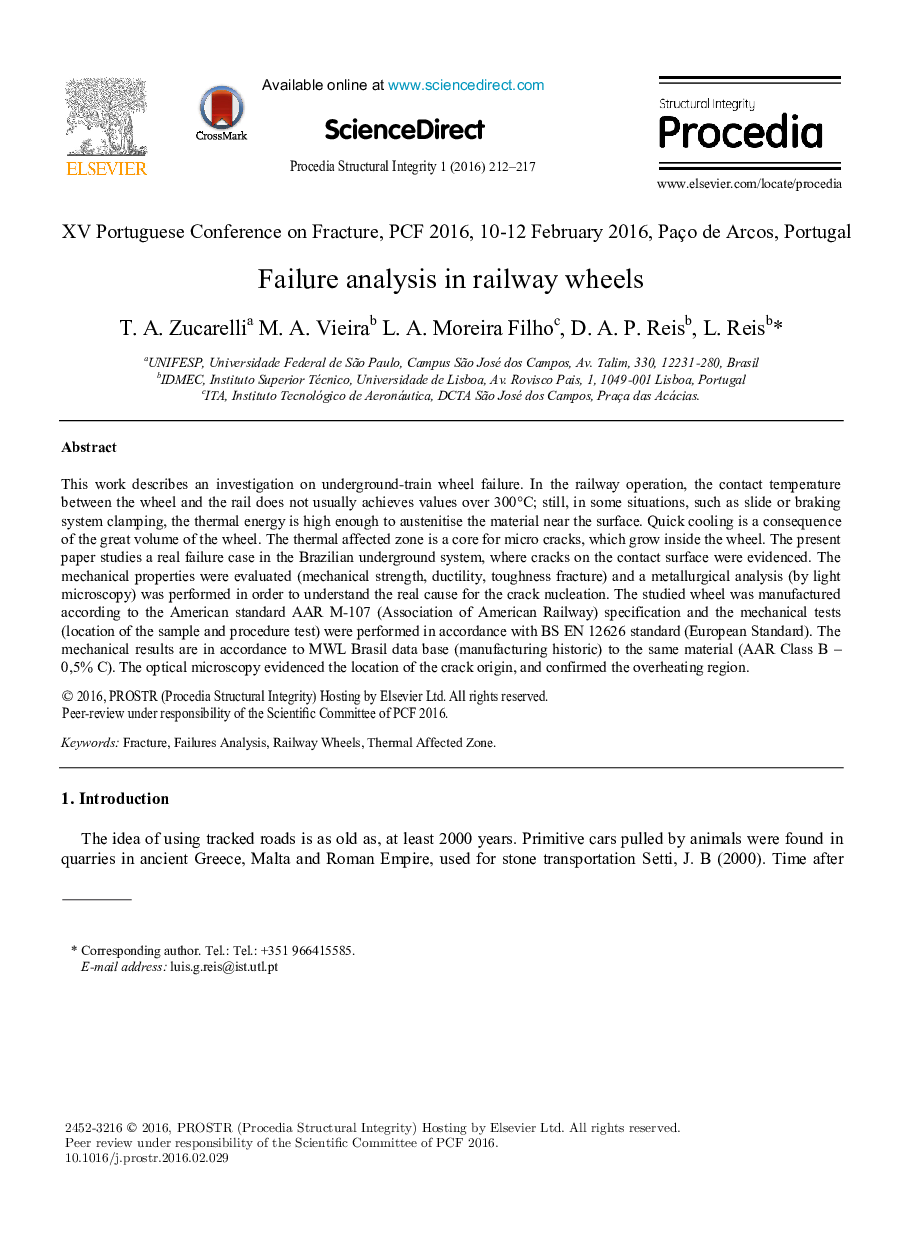| Article ID | Journal | Published Year | Pages | File Type |
|---|---|---|---|---|
| 1558772 | Procedia Structural Integrity | 2016 | 6 Pages |
This work describes an investigation on underground-train wheel failure. In the railway operation, the contact temperature between the wheel and the rail does not usually achieves values over 300°C; still, in some situations, such as slide or braking system clamping, the thermal energy is high enough to austenitise the material near the surface. Quick cooling is a consequence of the great volume of the wheel. The thermal affected zone is a core for micro cracks, which grow inside the wheel. The present paper studies a real failure case in the Brazilian underground system, where cracks on the contact surface were evidenced. The mechanical properties were evaluated (mechanical strength, ductility, toughness fracture) and a metallurgical analysis (by light microscopy) was performed in order to understand the real cause for the crack nucleation. The studied wheel was manufactured according to the American standard AAR M-107 (Association of American Railway) specification and the mechanical tests (location of the sample and procedure test) were performed in accordance with BS EN 12626 standard (European Standard). The mechanical results are in accordance to MWL Brasil data base (manufacturing historic) to the same material (AAR Class B – 0,5% C). The optical microscopy evidenced the location of the crack origin, and confirmed the overheating region.
